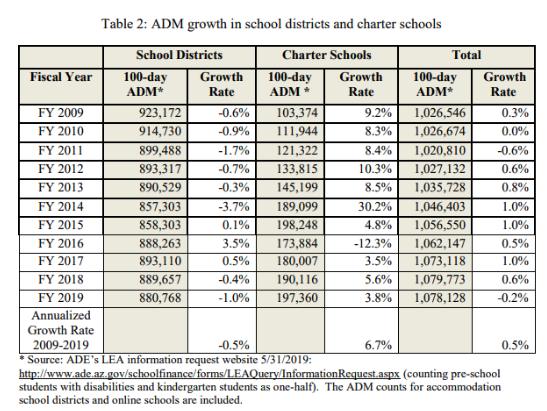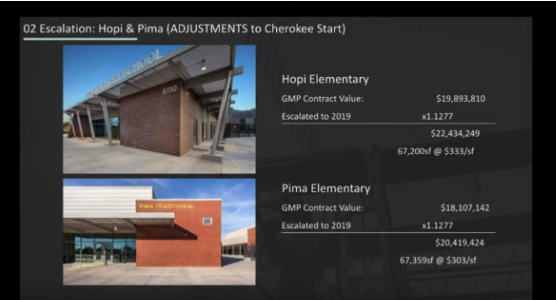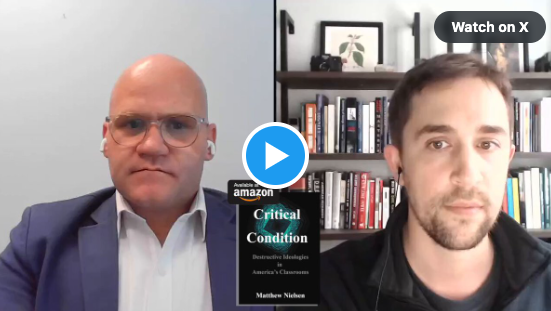Note: This article appeared originally at Chamber Business News. Reproduced here with the permission of the author.
Egypt arose as “the gift of the Nile” because the river enabled easy transport. Arizona can be thought of as “the gift of the Colorado” given that without the canal bringing down water there would be far fewer of us here. Ancient Egypt and modern Arizona share other similarities-including an arid climate and (alas) an edifice complex.
Egyptians developed an edifice complex by spending vast fortunes of human labor and treasure building giant stone tombs, which always wound up getting robbed, making them not only unimaginably expensive but also entirely pointless. So why the trip down history lane? Stick with me, it all will make sense soon.
Arizona doesn’t build pyramids, but we do however continue to build far more district school space than demanded by parents with an almost Pharaonic ferocity. The Superintendent of Public Instruction’s Financial Report listed $868,808,456 in school facility construction costs between 2008 and 2018. The total value of buildings and land held by districts increased from $12.6 billion to $19.4 billion during this period, according to the same report. The chart below from the latest School Facilities Board report, however, shows that the number of students attending Arizona districts declined during the Great Recession.

Statewide district enrollment declined by 42,404 over the last 10 years, while district spending on facilities and debt continued to increase despite fewer students statewide. Districts of course vary in their enrollment circumstances, with some growing, many flat and others seeing declines. We should not begrudge fast growing districts that build much-needed space, especially if it is being acquired in an efficient manner. However, some of the biggest construction projects have come from districts with declining enrollment, and efficiency doesn’t seem to be near the top of the priority list.
The reason spending on facilities may have gone up while enrollment has declined seems to have to do with politics, rather than the need for space.
The Arizona Center for Investigative Reporting (AZCIR) and KJZZ reported in 2017 on financial relationships between a small group of architects, construction companies and subcontractors and the school districts in Maricopa County. They found that architects, construction firms and subcontractors accounted for nearly all the financial contributions made to Maricopa County districts’ bond and override campaigns from 2013-2016. This is dubious enough in a fast-growing district with clear facility needs, but it has also been happening in districts with shrinking enrollments.

Scottsdale Unified School District, which has a declining student population and a great deal of vacant space, is spending $303 and $333 per square foot on two new schools, according to an April 11 presentation made by a contracting firm to Scottsdale Unified board members regarding their troubled school construction process which included the image above. If those costs seem a bit high to you, it might be because Arizona charters are currently spending closer to $200 per square foot for new construction.
The bigger question of course is why a district with a great deal of vacant and unused space finds itself spending hundreds of millions of dollars on school space. The Arizona Auditor General found that Scottsdale Unified could have generated enough revenue from making better use of vacant facility space to give every teacher a $2,700 raise in 2012. Instead the district is spending hundreds of millions on facilities without enough students to fill the current facilities, and dropped average teacher pay by over $4,000 between fiscal year 2017 and 2018.
The Arizona Chamber Foundation and Goldwater Institute recently found that Arizona has more than 1.4 million square feet of vacant and underutilized space. Bond elections mired in self-interested special interest funding and low voter turnout are only compounding the issue.
Here’s a modest proposal to improve matters—Arizona should collect K-12 capital funding on a statewide, rather than a local basis and provide it on an equitable per pupil basis to students. District and charter schools should be free to spend these funds in whatever fashion they feel furthers their educational mission, whether that is building a new school, patching a leaky roof, or paying their teachers. Finally districts with surplus school space should either sell or lease space to high demand models to generate additional operating funding, offload a cost, and provide additional opportunities to families.
Alternatively, we could just continue to build like an Egyptian.


